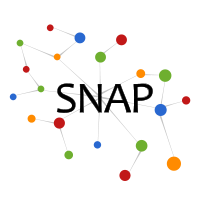Modeling Real-World Action Sequences
We develop statistical models that can predict future actions and their timing in human real-world action sequences, enabling just-in-time adaptive interventions.
Modeling Real-World Action Sequences
Mobile health applications, including those that track activities such as exercise, sleep, and diet, are becoming widely used. Accurately predicting human actions in the real world is essential for targeted recommendations that could improve our health and for personalization of these applications. However, making such predictions is extremely difficult due to the complexities of human behavior, which consists of a large number of potential actions that vary over time, depend on each other, and are periodic. Previous work has not jointly modeled these dynamics and has largely focused on item consumption patterns instead of broader types of behaviors such as eating, commuting or exercising. In this work, we develop a novel statistical model, called TIPAS, for Time-varying, Interdependent, and Periodic Action Sequences. Our approach is based on personalized, multivariate temporal point processes that model time-varying action propensities through a mixture of Gaussian intensities. Our model captures short-term and long-term periodic interdependencies between actions through Hawkes process-based self-excitations.
Results
We evaluate our approach on two activity logging datasets comprising 12 million real-world actions (e.g., eating, sleep, and exercise) taken by 20 thousand users over 17 months. We demonstrate that our approach allows us to make successful predictions of future user actions and their timing. Specifically, TIPAS improves predictions of actions, and their timing, over existing methods across multiple datasets by up to 156%, and up to 37%, respectively. Performance improvements are particularly large for relatively rare and periodic actions such as walking and biking, improving over baselines by up to 256%. This demonstrates that explicit modeling of dependencies and periodicities in real-world behavior enables successful predictions of future actions, with implications for modeling human behavior, app personalization, and targeting of health interventions. For more details, check out our paper.
Code
Our code can be downloaded here. The archive contains a README file, C++ code for model training and testing, and two synthetic datasets (we cannot release individual-level data due to privacy concerns). We generate the synthetic datasets as follows:
- Train TIPAS model based on full dataset described in WWW paper (13,035 user histories).
- Generate a new user action sequence by sampling from the TIPAS generative point process model. We sample eight weeks of actions and use the first half for training and the latter half for testing.
- Repeat previous step as needed (we release a 100 user and a 1000 user dataset).
Publications
Takeshi Kurashima, Tim Althoff, Jure Leskovec. Modeling Interdependent and Periodic Real-World Action Sequences. WWW, 2018.
Bibtex ReferenceContributors
The following people contributed to the TIPAS project:
Takeshi KurashimaTim Althoff
Jure Leskovec



